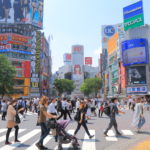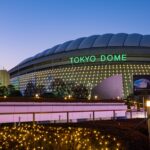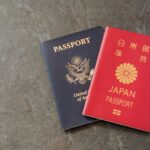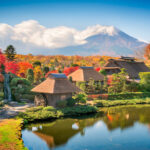Does Korea Celebrate Lunar New Year?

Does Korea Celebrate Lunar New Year?
Understanding Seollal Traditions
The Lunar New Year, known by various names across East and Southeast Asia, is one of the most widely celebrated holidays in the world. In Korea, this holiday is called “Seollal” (설날) and is indisputably one of the most significant traditions and cultural events. Let’s delve deeper into the Korean Lunar New Year celebrations and understand its historical and cultural underpinnings.
Historical Context of Seollal
To appreciate the significance of Seollal in Korea, it’s crucial to recognize its historical context. The Korean peninsula has long been influenced by Chinese civilization. This influence encompasses many aspects, including writing (the adoption of Chinese characters before the invention of Hangeul), philosophy (such as Confucianism), and, of course, the lunar calendar. Over time, however, Korea has adapted these shared traditions, making them distinctly Korean.
Seollal Celebrations: A Time for Family
At its heart, Seollal is a family holiday. During this time, it’s customary for Koreans to return to their ancestral hometowns. This mass migration results in what could be likened to the American Thanksgiving traffic, but on an even grander scale.
Seollal is usually celebrated over three days: the day before, the day of, and the day after the New Year. The festivities center around ancestral rites known as “Charye.” Charye is a formal ceremony where families pay respect to their ancestors by preparing a ritual table with specific food offerings and performing traditional bows.
After the ceremony, the food is shared among the family members, turning the ritual into a communal family meal. This is when traditional dishes like “tteokguk” – a rice cake soup – come into play. It is believed that consuming this soup adds a year to one’s age, symbolizing the progress into the new year.
Cultural Practices and Games
Apart from the solemn Charye, Seollal is also a time for joy and games. Traditional games such as “Yut Nori,” a board game involving wooden sticks, are popular. The aim is for participants to toss the sticks and move their markers around the board, much like a race. These games are a way for family members of all ages to bond and enjoy the holiday together.
Another important part of Seollal is the giving of “Sebaetdon” or New Year’s money. Elders typically hand out money to younger family members after receiving a deep traditional bow, called “Sebae.”
Traditional Clothing: Hanbok
Seollal is one of the occasions when Koreans, regardless of age, dress in their traditional clothing called “Hanbok.” Hanbok is characterized by vibrant colors and simple lines. Wearing Hanbok during Seollal is not only a nod to tradition but also a way to embrace and showcase national pride and identity.
Modern-day Celebrations
While the essence of Seollal remains rooted in traditions, modern Korea has seen some changes in how the holiday is celebrated. With the relentless pace of urban life and more nuclear families, some urbanites opt for simpler Seollal celebrations or even overseas trips during the holiday. Nevertheless, many still prioritize family reunions, reflecting the enduring importance of familial bonds in Korean culture.
Are companies and shops closed during lunar new year holidays? Do many people travel taking advantage of long holidays during lunar new year celebration?
Seollal Shutdowns and Travels During Lunar New Year
Seollal, the Korean Lunar New Year, is undeniably one of the country’s most cherished holidays. But what happens to Korea’s buzzing urban life during these festivities? Do businesses shutter their doors, and do people capitalize on the long holidays to travel? Let’s uncover the rhythm of Korea during this significant holiday.
Businesses and Seollal: A Well-deserved Rest
The majority of businesses in Korea do close for Seollal. It’s not just a day off; it’s a national holiday where the focus shifts from the hustle and bustle of daily life to family and traditions.
- Large Corporations and Offices: Most corporate offices and businesses give their employees time off, not just for the day of Seollal but often for a few days encompassing the holiday, allowing for travel and family gatherings.
- Retail Shops and Restaurants: While many smaller local shops and restaurants might close, some larger department stores, supermarkets, and franchise restaurants in urban areas might remain open, albeit with shorter operating hours. However, it’s essential to check in advance if you plan to shop or dine out during this period.
- s of celebration might evolve, the heart and soul of Seollal remain unwavering.
- Public Services and Transportation: Public institutions like banks and government offices will be closed. As for public transport, while services like the subway and buses still operate, schedules might be adjusted, and trains and buses might be more crowded than usual due to the increased number of travelers.
The Great Seollal Exodus: Travel During Lunar New Year
Seollal prompts one of the largest annual mass migrations in Korea. But where are all these people heading?
- Homeward Bound: As mentioned previously, Seollal is fundamentally a family-centered holiday. Many Koreans travel to their ancestral hometowns to be with family, perform ancestral rites, and celebrate the New Year together. This means major highways, trains, and buses are often packed, and tickets for long-distance transport can be hard to come by if not booked well in advance.
- Tourism – Both Domestic and International: In recent years, with Seollal becoming a longer holiday for many, some Koreans take the opportunity to travel for leisure, both within Korea and abroad. Popular destinations within Korea like Jeju Island see an influx of tourists. Meanwhile, international travel to nearby countries like Japan, Vietnam, and Thailand also sees a boost.
- Staycations: Not everyone wishes to travel during Seollal. Some urbanites, especially those from younger generations or those without strong ancestral ties in distant provinces, might choose to stay in their cities, enjoying the quieter streets and the break from their usual routines.
Conclusion
Seollal in Korea paints a picture of duality. On one hand, the quieting down of usually vibrant cityscapes as businesses close and many residents leave for their hometowns. On the other hand, the bustling transport hubs filled with people, either heading home or to holiday destinations. It’s a time when Korea, as a nation, takes a collective pause, whether to uphold traditions or to take a breather from the modern-day grind.












